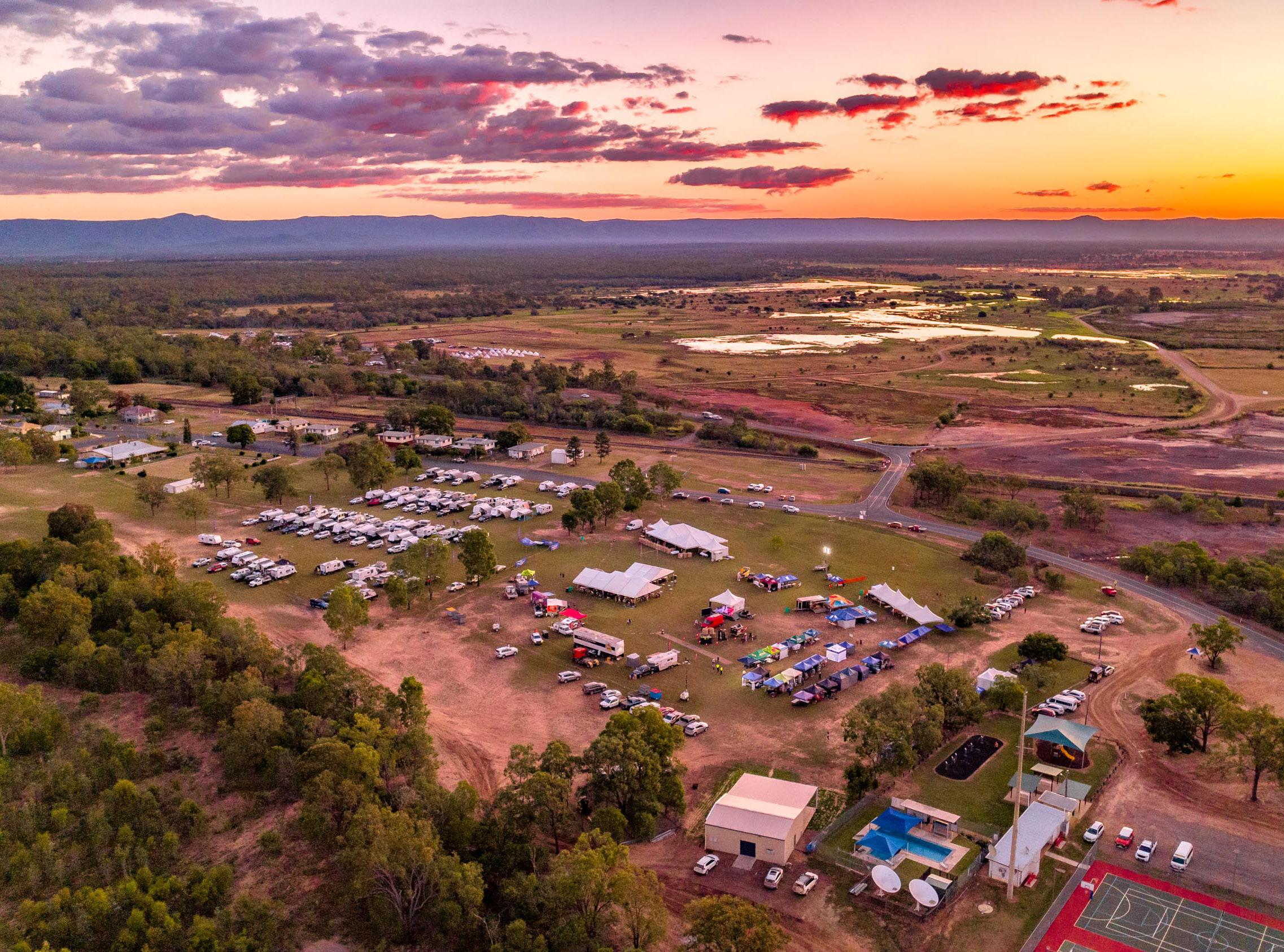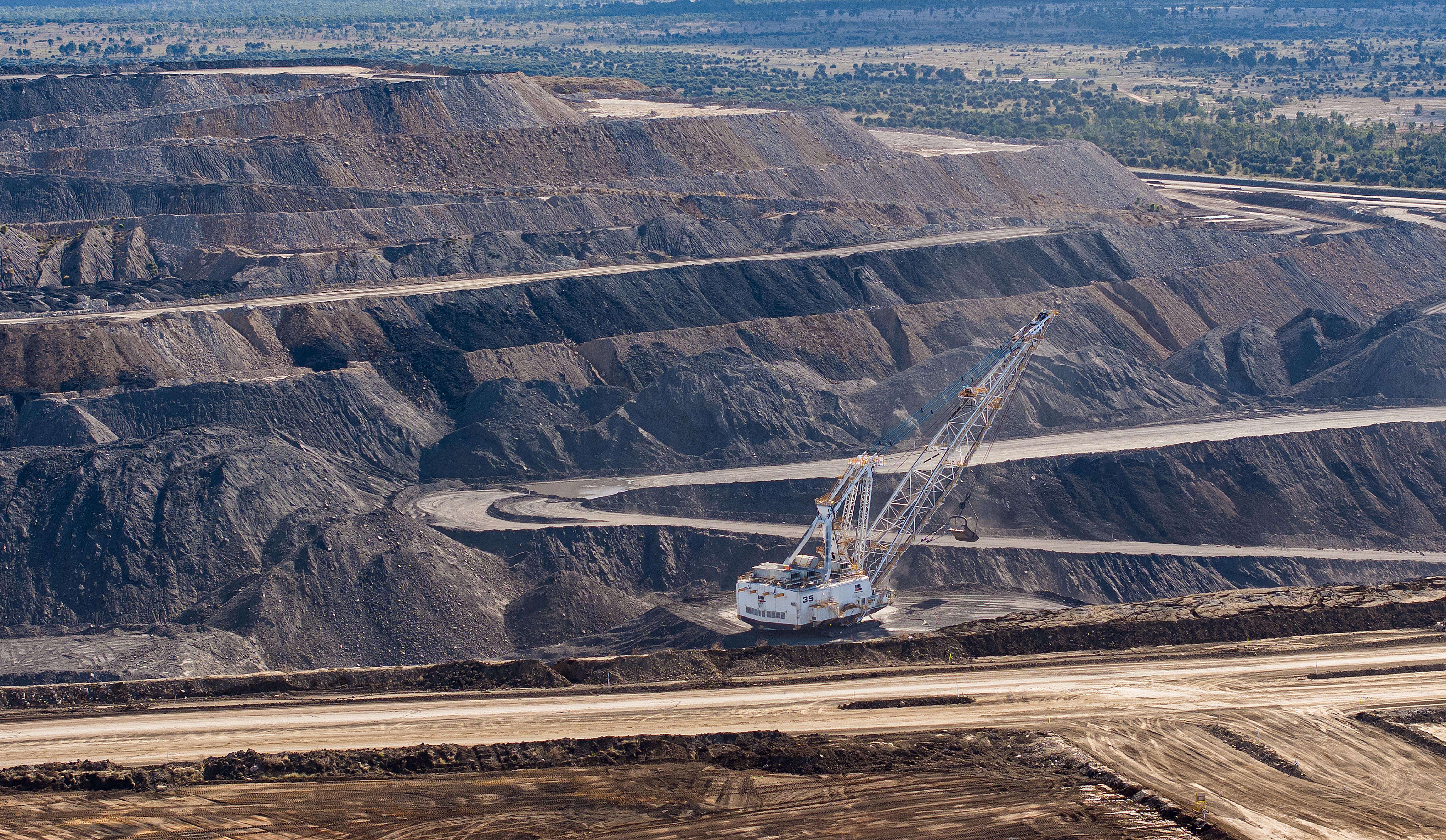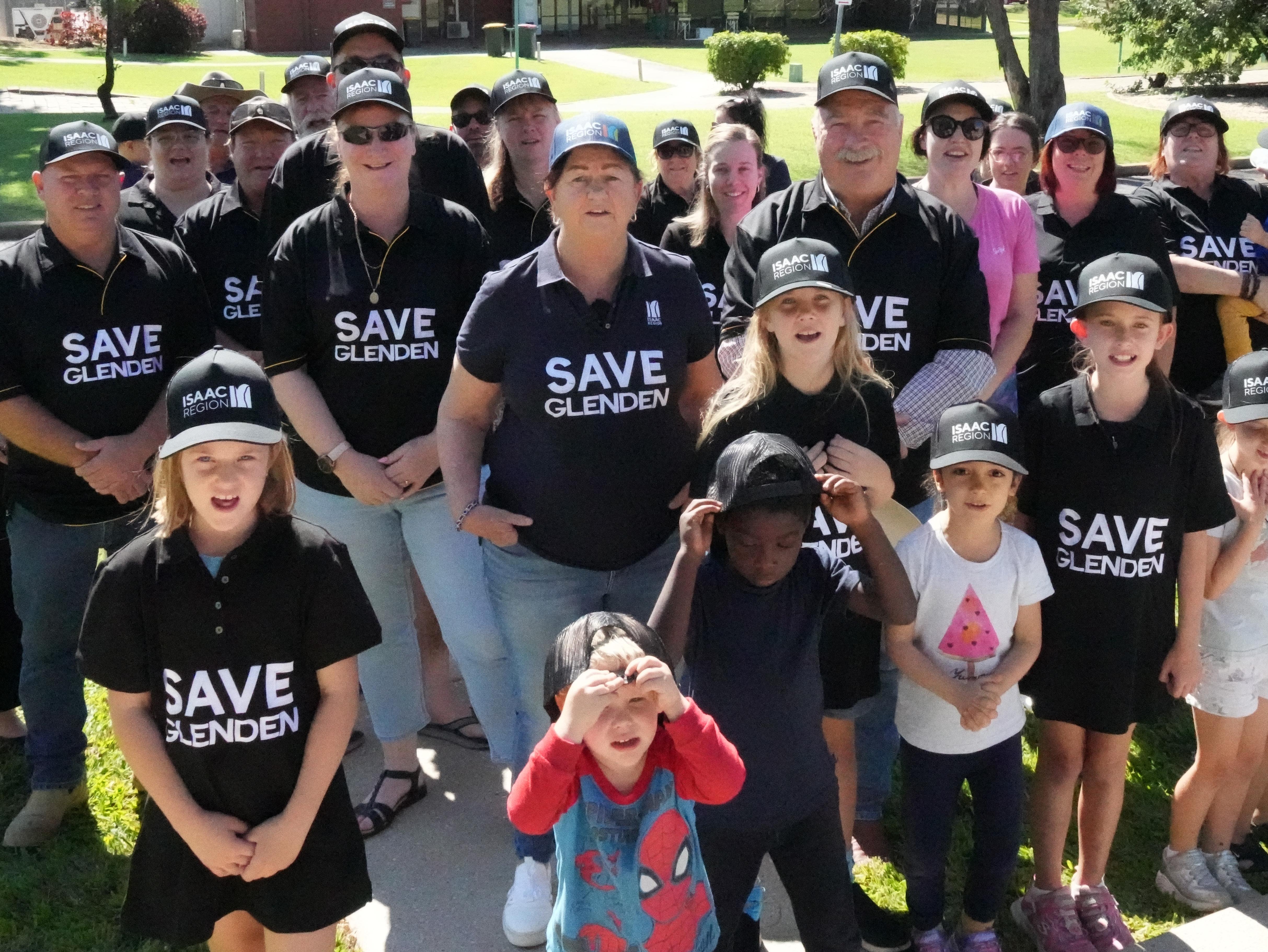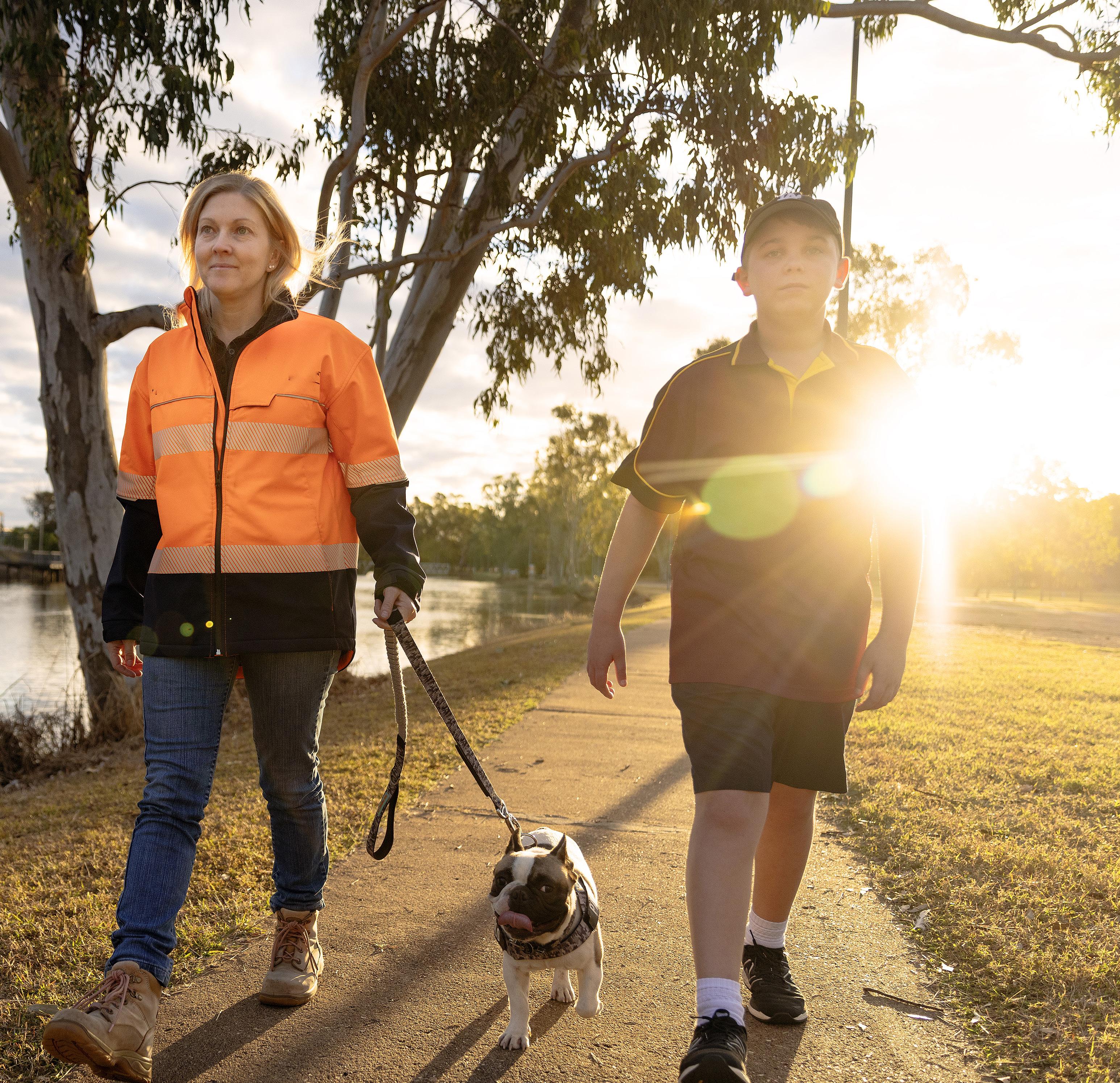ISAAC REGIONAL COUNCIL
PROPOSED MOTIONS | LGAQ CONFERENCE 2023




Isaac Regional Council acknowledges the Koinjmal, Widi, Birriah, Barada Kabalbara Yetimarala, Jangga, Barada Barna, Wangan and Jagalingou peoples as the Traditional Owners of lands and waters throughout the Isaac region and their enduring cultural connection to country and community.


We pay our respect to the Elders past, present and emerging for they hold the stories, culture and traditions of Aboriginal and Torres Strait Islander Peoples.
22,550
permanent residents*
13,405 non-permanent population*
We produce $32.233 BILLION annual economic output** $421.749 MILLION agricultural industry output**
58,709 square kilometres which
More than ever local governments across Queensland are being stretched, forcing us to operate outside of the traditional roads, rates and rubbish.
The people we work with, represent, and talk on behalf of, are counting on us as the grassroots level of government to help them navigate a transformation change and reimagine our communities.
Our role as community leaders has permanently shifted, requiring us to dig beneath the surface, understand complex issues and develop innovative answers.
It’s imperative we help each of our communities as they all have their very own unique set of needs and challenges.
Whether it is the impacts created by mine closures, industry downturns or changing community needs, our goal is to secure a prosperous future for all.
We are counting on your support this October so LGAQ can ensure the State and Federal Governments play their part in improving the social sustainability and the future economies of all Queensland communities.
We are delivering in a changing world and how we plan for our future matters.
WE ARE HOME TO ABOUT 50% OF ALL OPERATING COAL MINES, CONTRIBUTING NEARLY $2 BILLION ANNUALLY OF THE $5.2 BILLION IN RESOURCES ROYALTIES SHARED IN QUEENSLAND

ONE
The LGAQ calls on the State Government to work with local governments to develop an enforceable framework, similar to the concept of a Road Infrastructure Agreement, to be used by councils and proponents across all industries, allowing for hard and soft social infrastructure needs to be addressed in affected communities.
TWO
The LGAQ calls on the State Government to undertake legislative reform of the assessment process for major projects in Queensland to ensure contemporary impacts of major projects are appropriately consulted, considered and regulated for all stages of the project lifecycle.
THREE
The LGAQ calls on the State and Federal Governments to work together to seek innovative solutions to immediately address the critical shortages in health service delivery being experienced by Australians living in regional, rural and remote areas.
The LGAQ calls on the State Government to work with local governments to develop an enforceable framework, similar to the concept of a Road Infrastructure Agreement, to be used by councils and proponents across all industries, allowing for hard and soft social infrastructure needs to be addressed in affected communities.
Development of the Social Infrastructure Agreement concept including, but not limited to, consideration of:
• Alignment with the format and process of established Infrastructure Access Agreements between local governments and major project proponents intended to recoup costs arising from project generated increased demand on local water, sewerage and road networks.
• Identified thresholds to trigger any agreement.
• Methodologies to assist local governments to account for and quantify the social value of social infrastructure and develop multi-perspective need scenarios.
• Appropriate regulatory and legislative controls to ensure agreements are legally binding and tethered to the land parcel to be developed, in preference to the project proponent, to ensure continuation of the agreement regardless of current ownership.
• Development of a resource kit which can also be used by project proponents to assist them to achieve social license to operate (SLO), that is the ongoing acceptance and approval of the project by the community, through social infrastructure investment.
• Definitions of social infrastructure which include both hard (built) and soft (service) elements and consider the social value of places traditionally excluded from more narrow definitions such as natural third spaces.
• Capacity to respond to communities’ aspirations for the future
Social infrastructure includes the physical buildings and services which support community life and represents a fundamental component of overall social sustainability, supporting positive outcomes across peoples’ environmental, economic, political, and cultural conditions. It is the foundation communities need to secure a positive and desirable future as our as they embrace a changing world.
Current regulation requires major project proponents develop an Environmental Impact Statement (EIS) to gain project approval, however social impacts are not given the same weight as environmental or economic concerns. This has led to shortcomings in meaningful and sustainable investment in social infrastructure, including ad hoc planning based on immediate felt needs identified in hasty community engagement processes which aim to mitigate impacts from a with the view of not making a bad situation any worse. This disregards the long-term aspirations of host communities.
Project proponents readily enter into Infrastructure Access Agreements directly with Councils to manage more readily quantifiable demand for water, sewerage and road network use. Impacts to social infrastructure are left to be managed through proponent commitments in Social Impact Management Plans (SIMPs) developed through the EIS. While the process requires proponent to engage with local governments in the development of SIMPs the commitments within these plans represent an unenforceable agreement between the proponent and the State. This has led the Queensland Government experiencing difficulties holding proponents to account for failing to deliver on agreed commitments. Compounding the situation are projects where the approval pathway does not require even the minimal consideration and management of social impacts stipulated under the EIS process. The cumulative effect of these projects, including renewables and smaller scale extractive projects, present an unacceptable risk to Councils and ratepayers who are left to fund additional demand from developments. The outward manifestation of the current process includes unmanaged social impacts, essential services strained beyond capacity, social exclusion, weak social license to operate (SLO) for proponents and disconnect between levels of government. Ultimately the current process represents a woefully inadequate mechanism to ensure meaningful and appropriate investment in social infrastructure and address the declining liveability and wellbeing of affected communities.
The current situation in the Isaac township of Glenden presents a clear example of where the existing approvals process has failed the community and why additional controls such as the Social Infrastructure Agreements proposed by this motion are crucial for the liveability and wellbeing of communities affected by major project developments.
Established in 1981 the community supported long standing operation Newlands Coal Mine. With Newlands scheduled for closure in 202X the approval of QCoal’s Byerwen operation presented an alternative opportunity for the town.
QCoal proposed a number of commitments and mitigations to deliver social value to the community in their EIS which was approved by the Coordinator-General in 2014, including development of residential accommodation options for the operational workforce and incentives to live locally, assistance for education and training providers, partnerships to deliver health services, community grants and ongoing stakeholder and community engagement.
In 2016 however the company commenced an alternative path and applied for approval of a permanent worker accommodation village on their lease instead of proceeding with their EIS commitments which offered workers genuine choice in where to reside.
Council refused the application which would have seen a 600-room workers camp built only 20km from Glenden.
Ultimately Council’s decision was upheld by the Planning and Environment Court of Queensland with the Court’s judgement noting the proposal would be ‘detrimental to the ongoing utilisation of significant social and administrative infrastructure’ in Glenden.

However, correspondence from the Minister of Resources in June 2023 advised preliminary approvals would be provided for a slightly reduced capacity WAV of 450 beds on QCoal’s mining lease, a decision which appears to disregard the Planning Act, justice system, the State Government’s EIS process and associated SIMP and recent state government policy.
If, as the situation in Glenden appears to suggest, proponents cannot be held accountable to deliver their approved commitments, the Queensland Government can overturn court judgements and established communities can be abandoned by industry there is a case for Local Governments to look to alternative mechanisms, such as the proposed binding Social Infrastructure Agreements, to pursue socially sustainable futures for communities.
The LGAQ calls on the State Government to undertake legislative reform of the assessment process for major projects in Queensland to ensure contemporary impacts of major projects are appropriately consulted, considered and regulated for all stages of the project lifecycle.
Full integration and line-of-sight between major project ‘parent’ approval processes, and downstream approvals in the assessment of major projects, ensuring project impacts are fully considered at each appropriate stage of the assessment process.
Recent examples in the Isaac region have highlighted how project proponents have exploited loopholes in the assessment system to choose a path of least resistance, where impacts of these proposals have not been appropriately consulted or managed, nor align to earlier approvals issued by the Coordinator-General or Department of Environment and Science as part of the environmental impact assessment process.
Major projects, in particular mining projects go through a wide range of legislation and as a result the approvals process creates multiple loopholes.
Take the recent situation in Glenden, as an example.
QCoal received approval for the Byerwen Coal Project by way of an EIS as a coordinated project under the State Development and Public Works Organisation Act 1971.
The EIS contained numerous commitments to locate workforces in the township of Glenden – both residential and non-residential. Since receiving approval QCoal has not proceeded to develop any of its land holdings in town, and continues to pursue development of a permanent workers camp adjoining the mine site.
QCoal has lodged two proposals with council, both of which have been refused on the basis that (among other reasons) the development conflicts with the EIS approved for the Byerwen Coal Project.
This position has been reinforced by subsequent appeals to, and decisions by, the Planning and Environment Court.
In parallel, QCoal made application through the Minerals Act to seek an approval from the Minister for Resources for a mining lease for “infrastructure” over the same land adjoining the mine site.
This application triggered a very public advocacv campaign.
Development of the Clarke Creek Wind Farm has also highlighted challenges in achieving social sustainability, where decision making authority has been removed from local government, with limited scope for assessments to consider social impacts or appeal rights.

In this instance, the Isaac community has been denied the opportunity to house a construction workforce and see the benefits of the project flow into the community, owing to the proponent then commuting their workforce for over 40 km from an adjoining LGA.
Without the oversight of an overarching or parent approval, the inconsistencies in legislation will leave communities vulnerable and local governments wearing the brunt of project impacts with little to no recourse.
The LGAQ calls on the State and Federal Governments to work together to seek innovative solutions to immediately address the critical shortages in health service delivery being experienced by Australians living in regional, rural and remote areas.
The pressing and persistent challenges faced by Australians residing in regional, rural, and remote areas regarding access to adequate health services has eroded health outcomes for regional Australians.
The geographical expanse of Australia presents a unique set of healthcare challenges, with individuals in remote areas often grappling with limited access to medical facilities, specialists, and resources.
For the State and Federal Governments to implement an interim contemporary framework to address critical shortages of medical, nursing and allied health staff, in the short term, which are presenting an unacceptable risk to regional communities.
The motion seeks that the State and Federal Governments prioritise an effective contemporary framework to build a sustainable, high quality health workforce that is distributed across the country not based on population numbers but based on demonstrated need.
The current model for provision of health care professionals and services is not working.
An urgent solution is needed to ensure critical roles across regional Queensland and regional Australia are filled.
Current inadequate service levels have led to a protracted lack of continuity of care for patients across regional Queensland and regional Australia which in some instances has led to extremely poor health outcomes.
This has resulted in disparities in health outcomes, prolonged wait times, and compromised quality of care.
There needs to be urgent intervention from State and Federal governments to remedy the failing systems.
At the core of this requested collaboration lies a commitment to innovative thinking and solution-oriented strategies that delivers revised healthcare models that ensures adequately funded and resourced health services for regional communities.
By leveraging combined resources and diverse perspectives, communities seek government to devise novel approaches that can be swiftly implemented to ameliorate the existing healthcare deficiencies.

This includes development of robust partnerships with academic institutions, research centres, incentives to attract healthcare professionals to underserved regions.
The focus extends beyond mere stopgap measures; it endeavours to establish sustainable, long-term solutions that can serve as a blueprint for future endeavours in healthcare reform.
As a result of growing community discontent, in November 2019, Isaac Regional Council established an advocacy platform from which it could represent its communities in relation to health services
The advocacy platform identified fundamental concerns and deficiencies in the provision of medical services, hospital services and allied health services such as:
- The current model of allocation of medical professionals to rural and remote communities is inadequate;
- That, current clinical services planning for hospitals and allied health services does not satisfy demand generated by the true population of Isaac’s communities (i.e. inclusive of permanent non-resident workers); and that
- Provision of resources to Isaac region hospitals is inadequate and not sustainable.
Whilst there is collaboration of local government, Mackay Hospital and Health Services, Primary Health Networks and local community on the ground, interim models to ensure locums are available at Isaac region local hospitals have been unsuccessful.
In one of our communities, Clermont, 1 locum doctor at the hospital had to service 3,000 plus residents and provide a general practice surgery. This led to workforce burn out due to
excessive time on call and instances of professional isolation in attempting to provide a health service to community.
Isaac region is a region that supports many high-risk industries and therefore has a high consequential risk and does not have the medical infrastructure or adequate medical staffing to respond to critical incidents as and when they occur.
This is further amplified with the Modified Monash Model classification being based on the Australian Statistical Geography Standard Remoteness Areas framework which again uses population and distance to define remoteness and classifications in its modelling.
When population’s such as Isaac’s are not considered as true population (that is the permanent resident population and permanent non-resident population) the cumulative impact of modelling of funding and health workforce placement leads to critical service level impacts which are being experienced across the region, with very real human outcomes.
The inadequate service levels have led to is a protracted lack of continuity of care for patients across the region which in some instances has led to extremely poor health outcomes.
For more information on the Isaac region:
1300 ISAACS (1300 472 227) records@isaac.qld.gov.au https://isaac.qld.gov.au/advocacy
You can also connect with us on Facebook, Instagram and Twitter: facebook.com/isaacregionalcouncil @isaacregionalcouncil @isaacrcouncil
